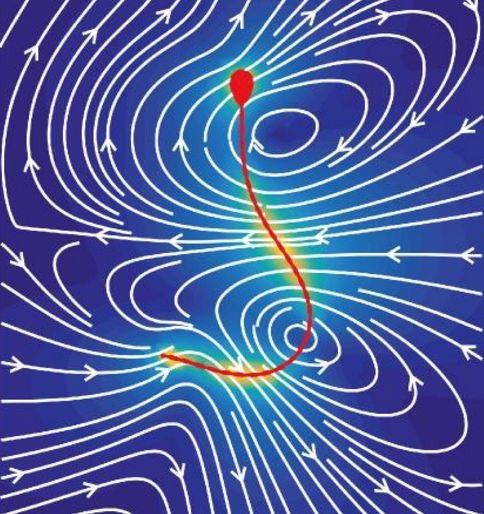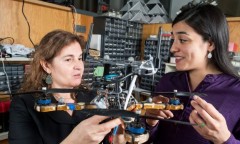By Arthur Dominic J. Villasanta , | March 21, 2017

The test does not require any special training and results can be known in just five seconds or less. (Harvard)
A mathematical formula based on the rhythmic movement of a sperm's head and tail, which significantly reduces the complexities of understanding and predicting how sperm make the difficult journey towards fertilizing an egg, has been developed by a team of multinational researchers.
Like Us on Facebook
Successful fertility relies on how a sperm moves through fluid, but capturing details of this movement is a complicated issue.
Researchers at the Universities of York, Birmingham, Oxford and Kyoto University, Japan, found the sperm's tail creates a characteristic rhythm that pushes the sperm forward, but also pulls the head backwards and sideways in a coordinated fashion.
The team plans to use these new findings to understand how larger groups of sperm behave and interact, a task that would be impossible using modern observational techniques. The work could provide new insights into treating male infertility.
Sophisticated microscopic high precision techniques are currently employed to observe, at the microscale, how a sperm achieves forward propulsion through fluid.
"Measurements of the beat of the sperm's tail are fed into a computer model, which then helps to understand the fluid flow patterns that result from this movement," said Dr. Hermes Gadêlha from the University of York's Department of Mathematics.
He noted that some 55 million spermatozoa are found in a given sample, so it becomes very difficult to model how they move simultaneously.
He said the team wanted to create a mathematical formula that will simplify how to address this problem of sperm propulsion and make it easier to predict how large numbers of sperm swim. This formula will help scientists understand why some sperm succeed and others fail.
By analyzing the head and tail movements of sperm, researchers now know sperm moves the fluid in a coordinated rhythmic way, which can be captured to form a relatively simple mathematical formula. This means complex and expensive computer simulations are no longer needed to understand how the fluid moves as the sperm swim.
The research demonstrated that sperm have to make multiple contradictory movements, such as moving backwards, in order to propel it forward towards the egg.
The whip-like tail of the sperm has a particular rhythm that pulls the head backwards and sideways to create a jerky fluid flow, countering some of the intense friction that is created due to their diminutive sizes.
"This suggests that sperm stirs the fluid around in a very coordinated way to achieve locomotion, not too dissimilar to the way in which magnetic fields are formed around magnets," said Dr. Gadêlha.
"So although the fluid drag makes it very difficult for the sperm to make forward motion, it does coordinate with its rhythmic movements to ensure that only a few selected ones achieve forward propulsion."
Now that the team has a mathematical formula that can predict the fluid movement of one sperm, the next step is to use the model for predictions on larger numbers of cells. They also believe that it will have implications for new innovations in infertility treatment.
-
Use of Coronavirus Pandemic Drones Raises Privacy Concerns: Drones Spread Fear, Local Officials Say

-
Coronavirus Hampers The Delivery Of Lockheed Martin F-35 Stealth Fighters For 2020

-
Instagram Speeds Up Plans to Add Account Memorialization Feature Due to COVID-19 Deaths

-
NASA: Perseverance Plans to Bring 'Mars Rock' to Earth in 2031

-
600 Dead And 3,000 In The Hospital as Iranians Believed Drinking High-Concentrations of Alcohol Can Cure The Coronavirus

-
600 Dead And 3,000 In The Hospital as Iranians Believed Drinking High-Concentrations of Alcohol Can Cure The Coronavirus

-
COVID-19: Doctors, Nurses Use Virtual Reality to Learn New Skills in Treating Coronavirus Patients










